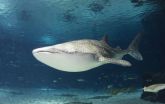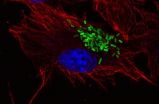(Press-News.org) Psychological scientists are exploring the mechanisms that underlie memory to understand why we remember certain things and why we forget others. Read about the latest research on memory published in the November 2012 issue of Psychological Science.
Retrieval-Induced Forgetting Predicts Failure to Recall Negative Autobiographical Memories
Failure to retrieve memories may not always be a bad thing - we might, for example, prefer to forget about certain instances of heartbreak or failure in favor of some of the more positive events from our lives. In this study, researchers Benjamin Storm of the University of California, Santa Cruz and Tara Jobe of the University of Illinois at Chicago asked participants to perform a memory task meant to assess retrieval-induced forgetting - when remembering one piece of information leads to forgetting other information. They also assessed participants' recall for positive and negative memories from their own lives. Storm and Jobe found that participants who displayed lower levels of retrieval-induced forgetting recalled more negative events than positive events. According to the researchers, this finding suggests that people who have impaired retrieval-induced forgetting may be less capable of inhibiting negative thoughts. Ultimately, this finding may help to shed some light on the relationship between forgetting - or lack thereof - and depression.
Intergenerational Transmission of the Reminiscence Bump and Biographical Conflict Knowledge
Historical knowledge is often transmitted through stories passed down from one generation to another. In this study, psychological scientists Connie Svob and Norman Brown of the University of Alberta examined whether the memories shared by older generations are the same ones remembered by younger generations. The researchers split young adults were split into two groups: those whose parents had lived through political conflict and those whose parents had not. The participants were asked to list 10 important memories from one parent's life and estimate their parent's age during the event. In both groups, the temporal reporting of the memories exhibited a reminiscence bump that was related to the parent's estimated age. According to Svob and Brown, these findings indicate that the reminiscence bump is influenced by sociocultural events.
Decay Versus Interference: A New Look at an Old Interaction
For years, researchers have debated whether memory traces decay with time, whether memory traces interfere with one another, or whether decay and interference occur together. In this study, Erik Altmann of Michigan State University and Christian Schunn of the University of Pittsburgh reexamined Waugh and Norman's 1965 study (often used as support for the interference-only perspective) from the viewpoint that decay and interference occur together. The researchers created a simple formal model based on existing memory theory that took into account both interference and decay and fit this model to Waugh and Norman's original data. The model fit the data well, suggesting that both processes may be at work and demonstrating the importance of a functional, system-level focus in driving memory theory.
### END
New research explores why we remember and why we forget
2012-11-16
ELSE PRESS RELEASES FROM THIS DATE:
Fire the coach? Not so fast, says new study by University of Colorado, Loyola professors
2012-11-16
Fire the coach? Not so fast says a new study of elite college football teams.
Professors from the University of Colorado and Loyola University Chicago studied what happened to the records of college football teams that replaced a head coach for performance reasons in the Football Bowl Subdivision (formerly Division 1-A) between 1997 and 2010. Over this period, an average of 10 percent of FBS teams fired their coach each year because of the team's poor performance on the field.
The authors used statistical methods to compare groups of teams that were similar except for ...
New whale shark study used metabolomics to help understand shark and ray health
2012-11-16
New research from Georgia Aquarium and Georgia Institute of Technology provides evidence that a suite of techniques called "metabolomics" can be used to determine the health status of whale sharks (Rhincodon typus), the world's largest fish species. The study, led by Dr. Alistair Dove, Director of Research & Conservation at Georgia Aquarium and an adjunct professor at Georgia Tech, found that the major difference between healthy and unhealthy sharks was the concentration of homarine in their in serum—indicating that homarine is a useful biomarker of health status for the ...
$20 million CU-Boulder instrument package set for integration on Mars spacecraft
2012-11-16
A $20 million remote sensing instrument package built by the University of Colorado Boulder, which is leading a 2013 NASA mission to understand how Mars might have lost its atmosphere, has been delivered to Lockheed Martin in Littleton, Colo., for spacecraft integration.
The remote sensing package designed and built by CU-Boulder's Laboratory for Atmospheric and Space Physics consists of the Imaging UltraViolet Spectrograph, or IUVS, as well as its electronic control box, the Remote Sensing Data Processing Unit, or RSDPU, both under contract to NASA Goddard Spaceflight ...
CSA group and IPAC-CO2 announce world's first standard for geologic storage of carbon dioxide
2012-11-16
Regina & Toronto, November 15, 2012 – CSA Group, a leading developer of standards, codes and training programs, and the International Performance Assessment Centre for Geologic Storage of Carbon Dioxide (IPAC-CO2 Research Inc.), an environmental non-government organization (ENGO), today announced the world's first bi-national carbon capture and storage (CCS) standard for the geologic storage of carbon dioxide (CO2) for Canada and the United States.
CCS is a process consisting of the separation of CO2 from industrial and energy-related sources, transport to a storage ...
Nano insights could lead to improved nuclear reactors
2012-11-16
PASADENA, Calif.—In order to build the next generation of nuclear reactors, materials scientists are trying to unlock the secrets of certain materials that are radiation-damage tolerant. Now researchers at the California Institute of Technology (Caltech) have brought new understanding to one of those secrets—how the interfaces between two carefully selected metals can absorb, or heal, radiation damage.
"When it comes to selecting proper structural materials for advanced nuclear reactors, it is crucial that we understand radiation damage and its effects on materials properties. ...
Mixing processes could increase the impact of biofuel spills on aquatic environments
2012-11-16
Ethanol, a component of biofuel made from plants such as corn, is blended with gas in many parts of the country, but has significantly different fluid properties than pure gasoline. A group of researchers from the University of Michigan wondered how ethanol-based fuels would spread in the event of a large aquatic spill. They found that ethanol-based liquids mix actively with water, very different from how pure gasoline interacts with water and potentially more dangerous to aquatic life. The scientists will present their results, which could impact the response guidelines ...
Creating a coating of water-repellent microscopic particles to keep ice off airplanes
2012-11-16
To help planes fly safely through cold, wet, and icy conditions, a team of Japanese scientists has developed a new super water-repellent surface that can prevent ice from forming in these harsh atmospheric conditions. Unlike current inflight anti-icing techniques, the researchers envision applying this new anti-icing method to an entire aircraft like a coat of paint.
As airplanes fly through clouds of super-cooled water droplets, areas around the nose, the leading edges of the wings, and the engine cones experience low airflow, says Hirotaka Sakaue, a researcher in the ...
Visualizing floating cereal patterns to understand nanotechnology processes
2012-11-16
Small floating objects change the dynamics of the surface they are on. This is an effect every serious student of breakfast has seen as rafts of floating cereal o's arrange and rearrange themselves into patterns on the milk. Now scientists have suggested that this process may offer insight into nanoscale engineering processes.
"Small objects floating on the fluid-air interface deform the surface and attract each other through capillary interactions, a phenomenon dubbed `The Cheerios Effect,''' explains student Khoi Nguyen. "Interesting motions occur here caused by attractive ...
Study finds how bacteria inactivate immune defenses
2012-11-16
A new study by researchers at Imperial College London has identified a way in which Salmonella bacteria, which cause gastroenteritis and typhoid fever, counteract the defence mechanisms of human cells.
One way in which our cells fight off infections is by engulfing the smaller bacterial cells and then attacking them with toxic enzymes contained in small packets called lysosomes.
Published today (Thursday) in Science, the study has shown that Salmonella protects itself from this attack by depleting the supply of toxic enzymes.
Lysosomes constantly need to be replenished ...
Arthritis study reveals why gender bias is all in the genes
2012-11-16
Researchers have pieced together new genetic clues to the arthritis puzzle in a study that brings potential treatments closer to reality and could also provide insights into why more women than men succumb to the disabling condition.
Rheumatoid arthritis – which affects more than 400,000 people in the UK and about 1% of the world's population – is a complicated disease: lifestyle and environmental factors, such as smoking, diet, pregnancy and infection are thought to play a role, but it is also known that a person's genetic makeup influences their susceptibility to the ...


